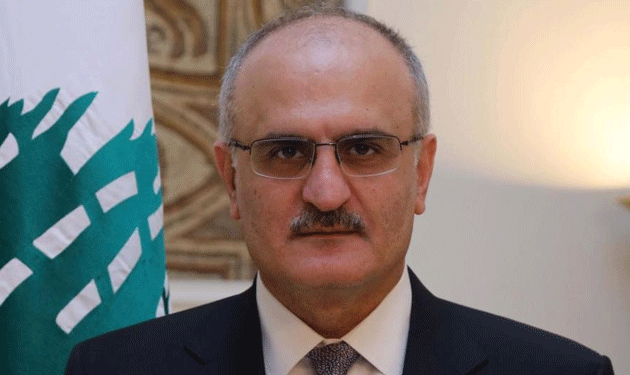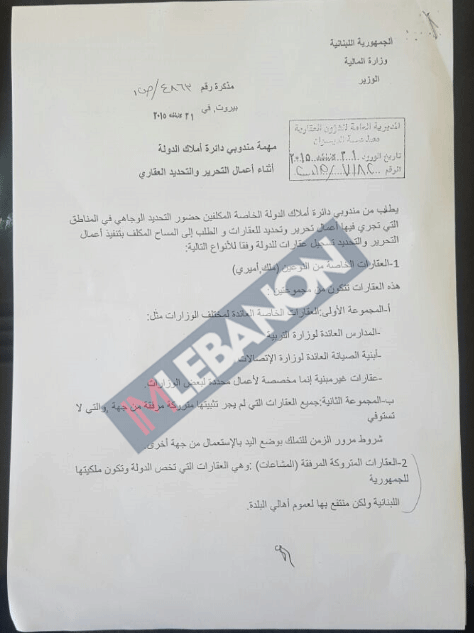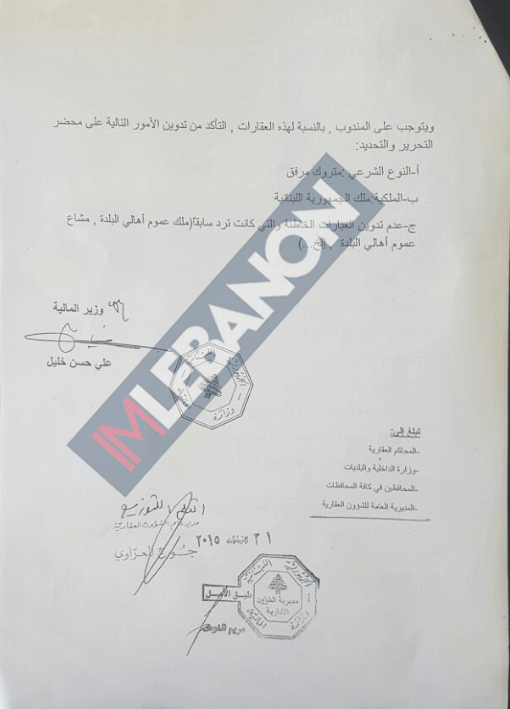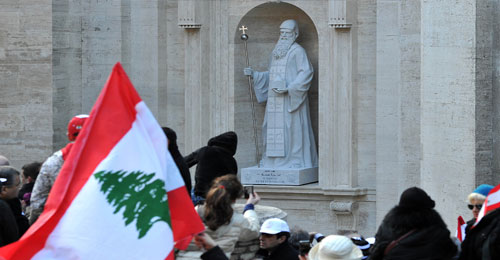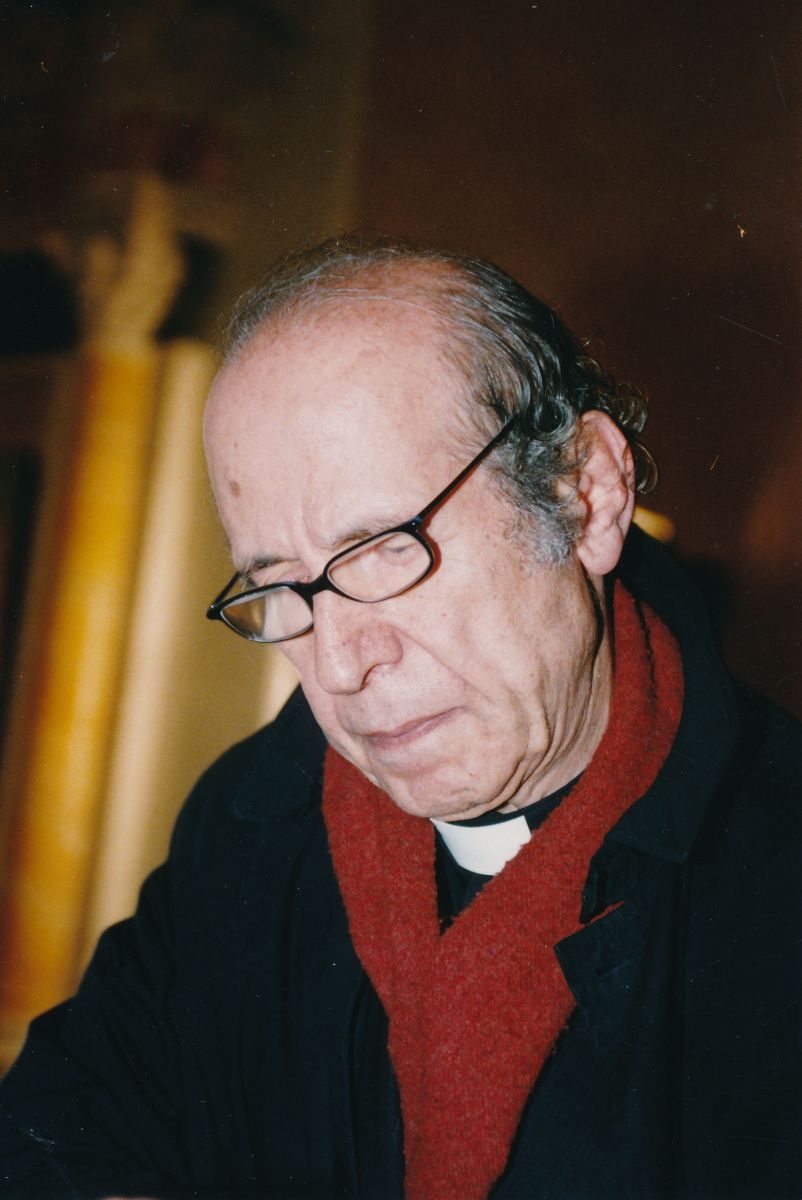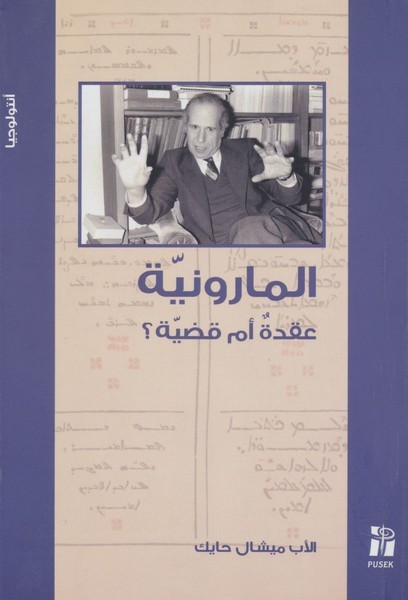المارونية: عقدة أم قضية؟
عام 1979 وفي زمن الصوم الكبير، ألقى الأب ميشال حايك (1928 ـ 2005) من على منبر كاتدرائية مار جرجس المارونية في بيروت إحدى عشرة محاضرة عن مار مارون والموارنة والمارونية، أرضًا وتاريخًا وروحانية، وتراثاً وآمالاً ومرتجى وتطلعات. هذه المحاضرات التي يقودنا بها الأب حايك في رحلة تبدأ من شمال سوريا ولا تنتهي إلا مع تحقيق حلم الموارنة بتأسيس وطن تعددي، وطن للحرية والبقاء، تم إصدارها عام 2012 في كتاب حمل عنوان "المارونية: عقدة أم قضية؟"، من إعداد جاد القصيفي، ومن منشورات مركز "فينيكس للدراسات اللبنانية" التابع لجامعة الروح القدس ـ الكسليك. في هذه المحاضرات يتدرج الأب حايك في الإضاءة على تاريخ شعب وأرض ومعاناة طويلة. وأهمية هذه المحاضرات أنها كانت في زمن الحرب وخلال معاناة جديدة كان يعيشها الموارنة ولم يكن واضحا بعد كيف ستنتهي.
المحاضرة الأولى: المارونية وأصولها التاريخية
أصلهم من شمال سوريا حيث عاش أبوهم مارون وحيث أُسّس ديرهم الأول قرب العاصي في تخوم الكنيسة الأنطاكية. إنهم يعرفون تمامًا روحانية الراهب الأول وعقيدة الذين اتبعوه منذ البدء حتى الفتح الإسلامي، ومن بعد ذاك تسدل الستارة عليهم قروناً عديدة، فلا يظهرون من خلالها إلا ببعض شاردات تدل على أنهم ما برحوا موجودين هنا وهناك في مختلف الأصقاع.
أما كيف نشأوا ككنيسة مستقلة بقيادة بطريرك مميّز عن غيره، فهذا أمر لا يزال يعتريه الغموض. جلّ ما يعلمون هو أن مؤسسهم هو قدس واسمه يوحنا مارون. أما غير هذا فماذا؟ لقد نقّبوا وتعبوا كثيرًا لإثبات وجوده عند مَنْ ينكرون وجوده، ولإثبات صحة إيمانه الكاثوليكي في وجه من يزعمون هرطقته، ولإثبات شرعية بطريركيته ضد من يعتبرونها بدعة. فالمارونية التي قامت كمؤسسة على هامة يوحنا مارون هي إذاً منذ بدايتها عقدة أصبحت في ما بعد قضية. هي إذاً في أساسها مطعون بها، معترض عليها في شخص مؤسسها وقد رافق هذا الطعن مراحل تاريخها في كيانها كأمة، في معتقدها كطائفة، في شرعيتها ككنيسة، في مطلبها الاستقلالي وفي مشروعها التحرري.
هذا الاعتراض عليها بدأ ساعة بدأت ولمّا ينتهِ وقد لا ينتهي حتى تزول هي أو يزول النقد، أو حتى يظهر شيء جديد من مطامير التراب. وجِد أم لا يوجد بطريرك اسمه يوحنا مارون على صورته المتعارف عليها، المهم أنه وجِدت أمّة مارونية تنتسب إليه ولم يكن لها أن تكون لو لم يكن لها بطريرك أول تعرّفت إليه تحت اسم يوحنا مارون من دون أن تستطيع التثبت من ملامحه التاريخية، حتى لكأنما محو الآثار الدالة عليه كانت محاولة لمحق جماعة المنتسبين إليه.
المحاضرة الثانية: المارونية وأصولها الروحية
إن حقيقة المارونية هي كلها في إسمها. سميت هكذا لا لسبب جغرافي أو محلي أو اجتماعي، إنما سمّوا موارنة نسبة الى راهب. فالمارونية إذاً باختصار في أساسها هي حركة روحية نسكية غير مرتبطة بأرض أو عرق أو لغة. فهي منذ البدء كما حددها معاصرها ومؤرخها تيودوريطس القورشي: "إنها فلسفة حياة العراء"، إذ لا بيت لصاحبها إلا الهواء، ولا سقف له إلا السماء. وكما اختار سمعان العمودي قرب حلب طريقة في النسك فاعتصم فوق عمود، كذا ابتدع مارون طريقة للنسك فانقطع وحده في الجرود. وعلى هذه الطريقة جرى من أخذوا بنموذجها واتخذوا اسم صاحبها شعارًا للروحانية التي يتبعون، فتأسس ديرهم في جوار العاصي قرب أنطاكيا تحت هذا الشعار الرهباني.
المحاضرة الثالثة: إنطاكية ولبنان
بين خليج إسكندرون في تركيا والعريش في مصر، يمتد ساحل هو منذ بدء التاريخ وجه آسيا المتطلع الى بقية العالم.
تاريخ الموارنة مرتبط بهذا الساحل، بهذه المدن، بهذا الجبل، بهذا الأرز. من الساحل كانت لهم تلبية الانصراف الى البعيد، ومن المدن كانت لهم علامة المدنيات الأصيلة، ومن الجبال عناء الطبيعة وشدة معشرها، ومن الأرز مناعة الروح ضد فساد الجذوع.
فهم إذاً حضاريًا أبناء المدنيات الثابتة على هذه السواحل والجبال. أما روحيًا فهم ينتمون أولاً الى القدس لأنها مقام المسيح، والى أنطاكيا ثانيًا لأن المسيحية ظهرت فيها جماعة مميّزة، والى روما ثالثاً لأن فيها اختار بطرس كرسيه.
أما لماذا اختاروا لبنان ولم يرحلوا عنه الى غيره، فإن الأسباب عديدة. فمنذ أن تلاشت أنطاكيا بعد مرور قرن على الفتح العربي، كان عليهم، وهم حملة تراثها الحر، أن يقيموها في لبنان. ومن الأسباب أيضًا أن جبال لبنان عاصية. فبعد أن ذلّ العاصي الذي نشأوا بقربه، إتبعوا مياهه صعدًا الى منبعه في عين الزرقا، ومن هناك تسلقوا بلاد جبيل.
المحاضرة الرابعة: المارونية تجاه الأرض والوطن
أعظم من سيرة صمود الموارنة في وجه الإمبراطوريات، كانت سيرة صمودهم في وجه الطبيعية. فهذه الطبيعة لو نطقت لأخبرت بما كان بين هذا الشعب وهذه الأرض من لقاءات. كانت عداوة في البدء ثم تحولت الى علاقة ود، ثم الى سيرة حب عظيم. ولكن كم من محاولة تمت للفصل بين الإنسان وأرضه؟ كم تعرض هو للقتل أو التهجير؟ وكم من مرة تعرضت هذه الأرض للسبي أو للاغتصاب أو للقتل؟ فالأرض هي شريكة الفرح والأسى تعرف الحياة والموت كما يعرفها الكائن الحي. هي باختصار ولكن بتطاول منهم على لغة ما يسمونه الرزق، كأنما ترابها هو القوت ويسمونها ملكاً تخوّل صاحبها أن يقابل وهو فلاح في الجبل السلطان المتربّع في اسطنبول لأنه هو أيضًا سلطان ولو مخفي.
مع هذه النظرة الجديدة الى الأرض، إستقدم الموارنة نظرة أخرى جديدة هي الوطن. لقد مهدوا الأرض لتصبح وطناً، لكن محاولتهم هذه أسقطتها العقليات التيوقراطية القائمة في المشرق، كما أفسدتها مطامع سياسة الغرباء. وكم عورضوا في مقاصدهم واتهموا حينذاك بالخيانة والتآمر على الإسلام، كما اتهموا مؤخرًا بالمؤامرة على العروبة. ثم يعود المتهمون بعد أن تختلف الظروف الى اعتناق ما كان الموارنة إليه يدعون.
المحاضرة الخامسة: مارونية الفكر والروح
مرت المارونية منذ مار مارون بمراحل عديدة تقمصت خلالها بمظاهر شتى كانت تعابير عن متغيّرات التاريخ والحياة. لقد جربت كل الاختبارات في الفكر والروح والسياسة والحياة، فكان منها قديسون وكان منها ملحدون.
إن المارونية تظهر اليوم شئنا أم أبينا بوجه قومي، فهي تتمثل بشعب مرتبط بلغة وأرض وتاريخ، إذ إن وراءها خمسة عشر قرناً من الرسوخ الكياني، وهذا يعني أن الكيان الماروني سابق لوجود أمم كبيرة كفرنسا وأميركا، إذ ليس هنا لعدد السكان أهمية، فعلى مستوى القيمة والكيان ليس الكمّ شيئاً هو الكيف كل شيء.
ولكن أيمكن حصر المارونية في إطار قومي؟ إن من يمعن التأمل في ماضيها يجد أنها على رغم بروز شخصيتها لم تشأ مرة أن ترهن ذاتها للقومية. صحيح أنها مرتبطة بلبنان ولكن من حيث هي مشروع حرية روحية لا تستعبدها الأرض.
فالمارونية الأصلية إذاً هي وليدة الفكر والروح، وهي أوسع من لغة وأرض وقومية. المارونية عملية معصية مستمرة تجاه العصبيات وهذا ما يجعلها معرضة لأخطار كل العصبيات واللغات، كما أنها هي تعرِّض هذه العنصريات الى خطر تجاوز الذات الذي تدعو إليه.
المحاضرة السادسة: علاقة الموارنة بروما وسائر المغرب
إن أول أثر تاريخي أظهر الموارنة كجماعة مميّزة كان نداء استغاثة وجهوه الى البابا هورميزدا (514 ـ 523) إثر مجزرة الثلاثمئة والخمسين راهبًا، والنداء الثاني كان عام 1916 وكان أيضًا الى البابا من الموارنة وهم على وشك الإبادة على يد جمال باشا.
وما بين الاستغاثة الأولى والثانية مرت أجيال وأجيال قاسوا فيها كل أنواع العذاب على يد من تعاقب على هذا المشرق من طغاة، ولم يكن للموارنة وسط هذا الجحيم من مخلص سوى ما كان يجيئهم من البعيد. لذا فإن علاقتهم بالغرب كانت أولاً قضية حياة أو موت جسدي، وثانيًا قضية حياة أو موت فكري وروحي. وما أكثر ما اتهم الموارنة بهذه العلاقة التي لم يخفوها ولا سبيل لذلك، لأنها واضحة تمام الوضوح. فهذه العلاقة هي أولاً قربى عقيدة ربطتهم منذ نشوئهم بكرسي روما، فإيمان بطرس هو إيمانهم، وإذا ثبت أنهم خالفوا مرة ذلك الإيمان في بعض مقولاته فلأن التعابير لم تصل إليهم حينها وهم منقطعون في جبالهم. ولكن لما عاد الزمن يفتح لهم سبيل اللقاء مع روما في القرن الثاني عشر، ها هم يقولون مقولة روما ولا يحيدون عنها، ويظلون حوالى خمسة قرون وحدهم كاثوليك في الشرق، الأمر الذي جعلهم يحتلون المركز الأول في الهرم الاجتماعي الذي أقامه الفرنجة الذين بعد رحيلهم عن الساحل هُجّر قسم من الموارنة الى رودوس وقبرص ومالطة وهي الهجرة الثانية. فبالأولى عبروا نهر العاصي الى لبنان، وفي الثانية عبروا البحر صوب الغرب. أما الباقون منهم في الجبال فقد دخلوا في نفق مظلم تحت حكم المماليك، لكن العلاقة مع الغرب لم تنقطع تمامًا.
خلال الفتح العثماني الذي امتد لأربعة قرون، يجدر التوقف خلاله عند سنة 1584 التي كانت فاصلة. ففي تلك السنة تسلم الأمير فخر الدين الحكم في الشوف، فتأسس لبنان الحديث. مع فخر الدين أخذت تبرز الشخصية المارونية وتتضح أهدافها، إذ وجدت لها بين الأمم المشرقية فريقاً يناصرها وتناصره لتحقيق مقصد مشترك ومصير موحد. وكما ناصر الموارنة آل عساف في كسروان وهاجروا إليها، كذلك ناصروا المعنيين وهاجروا الى الشوف، فعمّروه وفلحوا أرضه، وركزوا الإمارة على دعائم اقتصادية قوامها إنتاج الحرير. كما قدموا للأمير دعمًا سياسيًا فساعدوه على مد سيطرته على لبنان كله، وسهّلوا له الاتصال بالعالم الغربي والتحالف مع أمراء توسكانا واستقدام الخبراء والتجار والمرسلين لفتح المدارس واستصلاح الأراضي وتصريف الإنتاج. كما أن تأسيس المدرسة المارونية في روما في تلك السنة أيضًا (1584) كان تأسيسًا للبنان الفكري. من هنا ابتدأ عصر النهضة في المشرق وكانت تباشيرها تطلع حينذاك من المغرب، فساهم الموارنة في نشرها في الغرب، كما ساهموا في نشرها في الشرق ناهضين بالنهضتين الاثنتين معًا الى مستوى المعادلة.
ولكن ماذا جنى الموارنة من كل هذا؟ لا شيء، بل الكثير من العذاب والنميمة، ولكن كل هذا سهل على من قصد أمرًا كبيرًا والمقصود أمر كبير. كل قضية ثمنها بمستواها وقضيتهم كانت على مستوى الأعمال الخطيرة.
ينتهي الأب حايك في هذه المحاضرات الست من موضوع الموارنة لينتقل الى روحانيات مسيحية في المحاضرات الخمسة الأخيرة يتحدث فيها عن المسيح والتغيير الذي أحدثه في العالم كله وعن المحبة والصلب والظلم الذي أدى الى الحق.
ويختم أخيرًا في خلاصة يقول فيها: "أجل كل شيء تم للمسيح، أترى انتهت روايته؟ لن ينتهي شيء لا للمسيح ولا للمسيحية إلا متى انقرض نسل بيلاطس وسلالة هيرودس وعبرة يوضاس وأترابه. سيبقى الصليب مرفوعًا وستستمر فضيحة الجمعة العظيمة ما دام في الأرض عطاش الى البر، جياع الى العدل والخبز. في أي زمان ومكان حيثما توجد ضرورة لدفع ضريبة الخلاص لا بد لها أن تحضر حيثما يجب أن ترتفع صرخة العدالة للاعتراض على الشر. هذه الصرخة بالحق، هذه الصرخة بالمحبة هي كلمة الكنيسة وعلى الكنيسة أن تقلق الدنيا بكلمة المحبة وأن تجعل الناس يسهرون في بستان النزاع في مواجهة الألم والموت بكل شجاعة، كما واجه المسيح ألمه وموته، ألمنا وموتنا. وأخيرًا وليس آخرًا أن تجر الناس الى ارتقاء الجلجلة صعدًا نحو القيامة".
